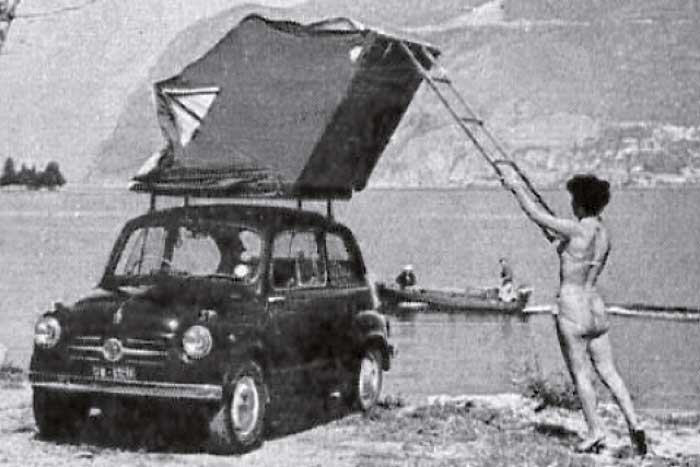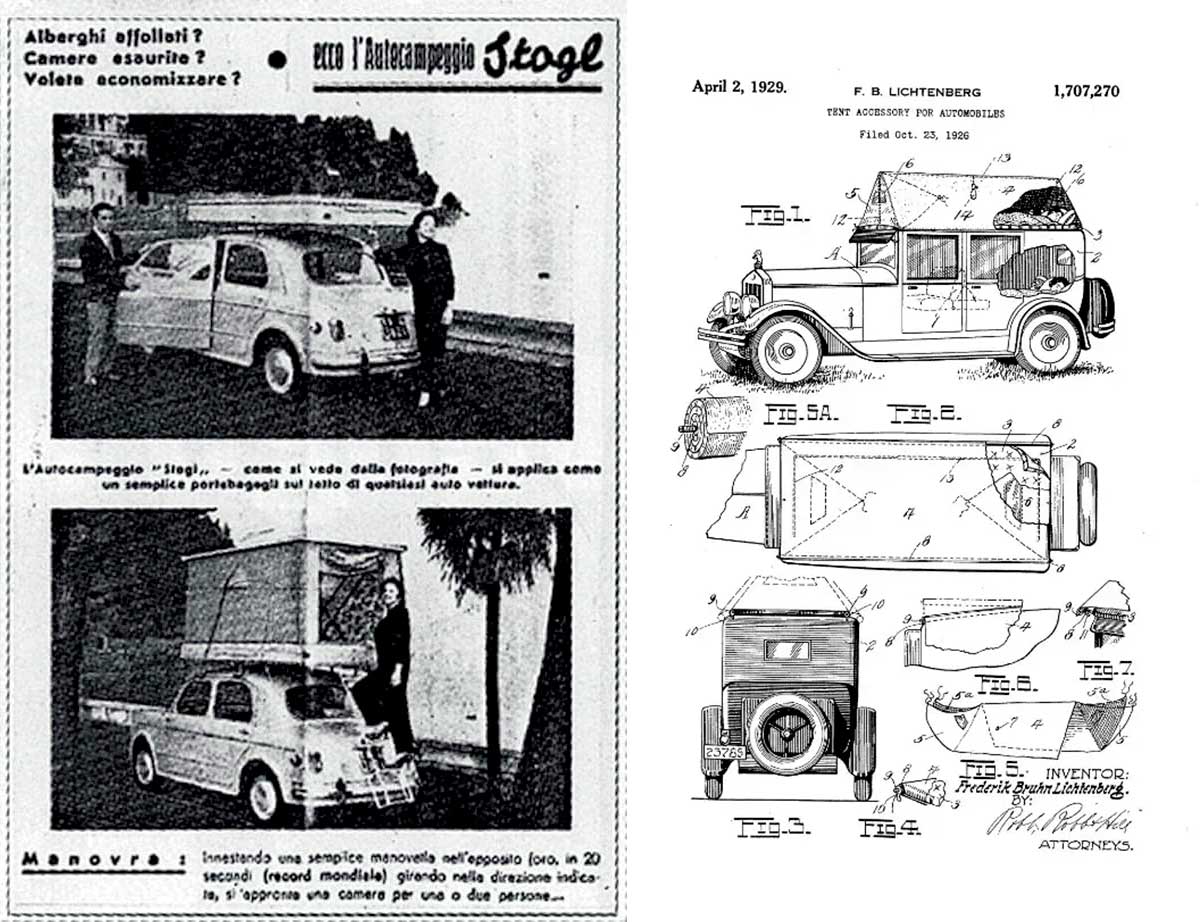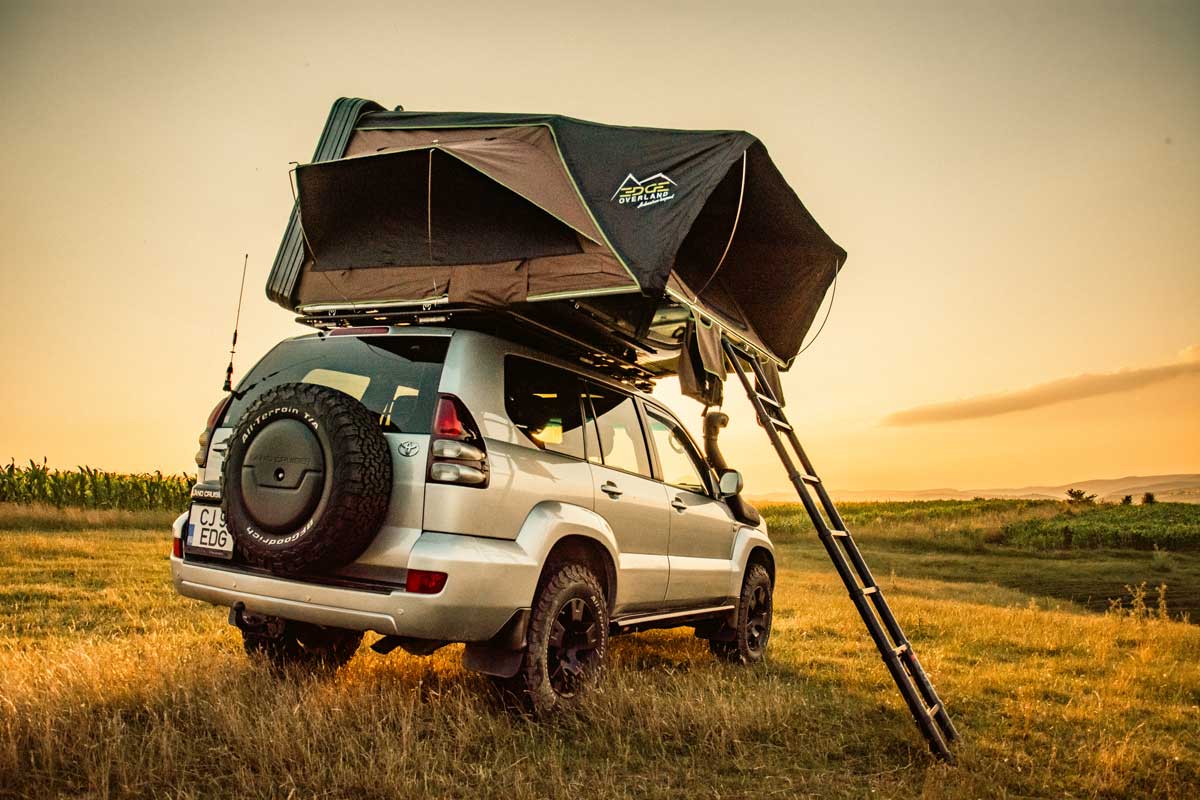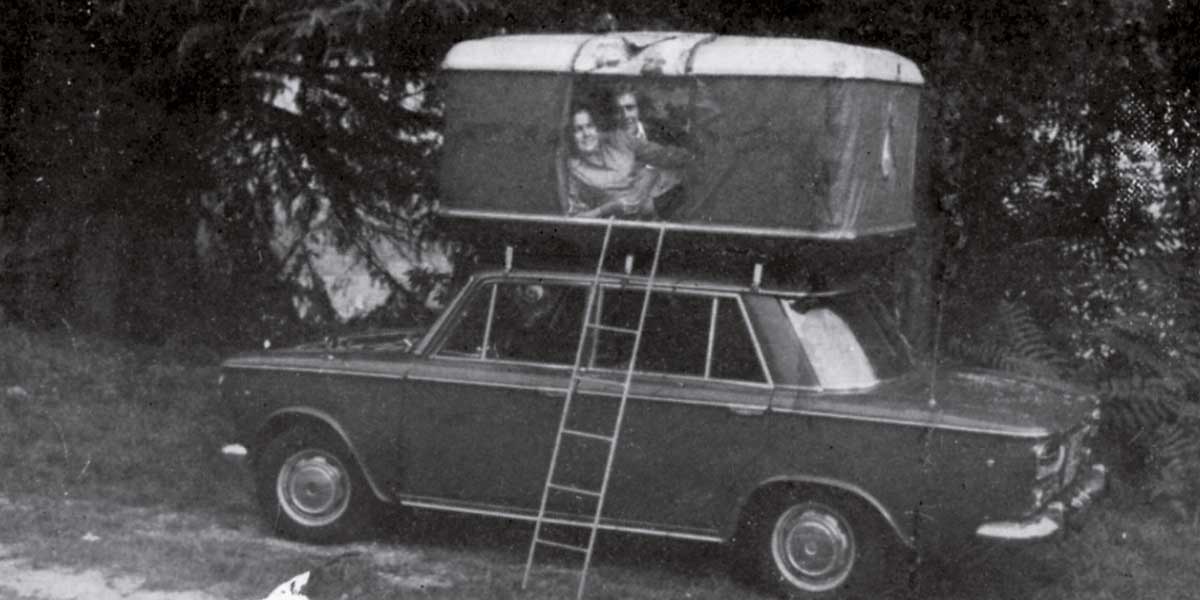The Fascinating Journey of Rooftop Tents from Past to Future

The Origins of Car Rooftop Tents
The journey of rooftop tents is as varied and adventurous as the landscapes they are set up on. Tracing back to their origins, these mobile abodes were not always the trendy camping solutions we see today. Initially, rooftop tents emerged out of necessity rather than leisure. They were designed to provide safety and comfort for explorers traversing through challenging terrains, where sleeping on the ground was not always a viable option due to wildlife, insects, or harsh environmental conditions.
The military's utilization of these tents across various global regions during wartime expeditions played a pivotal role in their development. Soldiers in unforgiving terrains like the deserts of North Africa or the jungles of Southeast Asia found rooftop tents indispensable. This military use not only tested the tents' durability and functionality in extreme conditions but also influenced their design. The need for quick deployment, robust materials capable of withstanding various weather conditions, and the ability to offer secure shelter from ground-level threats were key factors that shaped the early models of car rooftop tents.
These initial designs set the stage for the modern rooftop tent, evolving from a military necessity to a recreational accessory. As time progressed, these tents transitioned into the realm of adventure travel, where they continued to be refined and adapted, embodying the spirit of exploration and the pursuit of freedom.

Rooftop Tents in Recreational Travel
The transition of rooftop tents from military utility to recreational travel is a fascinating chapter in their history. In the wake of World War II, as the world gradually shifted to a period of peace and exploration, the concept of leisure travel gained momentum. This era saw a surge in the popularity of outdoor adventures, with more people seeking to connect with nature and explore remote locations. Car roof top tents found a new role in this burgeoning culture of leisure travel, offering a unique way to experience the great outdoors.
The rise of 4WD vehicles played a crucial role in this transformation. Vehicles like Land Rovers and Jeeps, once symbols of rugged military transport, became the preferred choice for adventurers and nature enthusiasts. These vehicles' robustness and off-road capabilities made them ideal companions for exploring uncharted territories. SUV rooftop tents complemented these vehicles perfectly, providing a safe, elevated sleeping area that was away from ground-level hazards like wildlife and flooding.
This synergy between 4WD vehicles and rooftop tents revolutionized outdoor camping. It allowed adventurers to venture into previously inaccessible areas and camp in relative comfort and safety. The car rooftop tent became more than just a place to sleep; it symbolized freedom, adventure, and the ability to explore the wild in a way that was previously unimaginable. This period marked the beginning of a new chapter in the story of rooftop tents, setting the stage for continuous innovation and enhancement that caters to the evolving desires of modern travelers.

Technological Advancements and Design Innovations
The evolution of rooftop tents is a testament to human innovation, particularly in the realms of technology and design. From the basic canvas models of the past, rooftop tents have evolved significantly, incorporating advanced materials and structural improvements to enhance the camping experience.
One of the most notable advancements is in the materials used. Initially crafted from simple, heavy canvases, modern rooftop tents now utilize lightweight, weather-resistant fabrics. These materials offer better protection against the elements, be it torrential rains or scorching sun, while also being easier to handle and more durable. The transition to ripstop fabrics and UV-resistant coatings has further enhanced their functionality, ensuring longevity and comfort.
Structural enhancements have also been remarkable. Early vehicle rooftop tents were somewhat cumbersome and required considerable effort to set up. Modern designs, however, have transformed this experience. Innovations include streamlined, aerodynamic profiles that reduce wind resistance during travel, and quick-deploy mechanisms that allow for easy and fast setup, often by a single person. This transformation has made rooftop tents for cars more accessible and convenient for a wider range of adventurers.
EDGE Overland has been at the forefront of these innovations. Our car rooftop tents exemplify the combination of modern materials and structural advancements, offering unparalleled ease of use, comfort, and reliability. With features like integrated insulation for temperature regulation and adaptable designs to fit various vehicle sizes, EDGE Overland's rooftop tents for cars, SUVs and pickup trucks represent the pinnacle of current technological and design advancements in the field. These improvements in rooftop tents are not just about comfort; they reflect a deeper understanding of the needs of modern adventurers. They cater to a desire for mobility, ease, and a seamless connection with the outdoors, marking a significant leap in the evolution of vehicle rooftop tents.

Current Trends in Car Rooftop Tent Usage
In recent years, the popularity of car rooftop tents has skyrocketed, reflecting a significant shift in outdoor recreational trends. This resurgence is largely driven by millennials, a generation known for valuing experiences over possessions. These younger adventurers seek off-the-grid escapades and are drawn to the unique blend of convenience and adventure that rooftop tents provide. These car tents allow for spontaneous travel, easy mobility, and the ability to set up camp in remote locations, aligning perfectly with the millennial ethos of exploration and freedom.
Social media has also played a crucial role in popularizing rooftop tents. Platforms like Instagram and Facebook are flooded with picturesque scenes of rooftop tents perched in idyllic locations, from serene beaches to majestic mountains. These images not only inspire wanderlust but also change the perception of camping from a rugged survivalist activity to a stylish and comfortable experience. The digital nomad lifestyle, with its emphasis on mobility and living off the beaten path, finds a perfect match in car rooftop tents, further fueling their popularity among modern travelers.
Rooftop Tent Overlanding Lifestyle: Embracing Adventure in Comfort
The rooftop tent lifestyle is an embodiment of modern adventure travel, where the thrill of exploration meets the comfort of home. This unique blend appeals to a wide range of travelers, from families seeking safe and convenient outdoor experiences to solo adventurers exploring remote landscapes. Rooftop tents for overlanding have revolutionized the camping experience, offering a comfortable and elevated retreat from the ruggedness of the wild.
Today's travelers are increasingly prioritizing unique, experience-based journeys. Rooftop tents cater to this trend by providing the flexibility to camp in diverse, often untouched natural settings while ensuring a comfortable and secure sleeping environment. This shift towards experiential travel is not just about seeing new places but about immersing oneself in the environment, and rooftop tents offer the perfect means to do so.
Furthermore, car rooftop tent camping has fostered a vibrant community of enthusiasts. Shared experiences and stories are central to this community, where new friendships are often forged over campfires under starlit skies. This social aspect, combined with the allure of adventure and comfort, continues to drive the popularity of the rooftop tent lifestyle.

Looking Towards the Future
As we look towards the future of rooftop tents, the horizon is brimming with potential innovations and advancements. Emerging technologies are set to redefine the design and functionality of these mobile abodes. One significant area of development is the integration of composite materials. These materials, known for their strength, durability, and lightweight properties, are anticipated to become more prevalent in rooftop tent construction. Their use promises not only enhanced structural integrity but also improved fuel efficiency for vehicles due to reduced weight.
Environmental sustainability is another critical focus area. As awareness and responsibility towards our planet grow, the demand for eco-friendly materials and manufacturing processes in rooftop tents is increasing. Future designs are likely to incorporate more sustainable materials, reducing the environmental footprint of camping.
In terms of trends, we can expect to see rooftop tents that are even more user-friendly, with advanced automated deployment systems, enhanced weather resistance, and smarter integration with vehicles. The future of rooftop tents lies in balancing the spirit of adventure with sustainability, convenience, and technological innovation, heralding a new era of outdoor exploration.
Going Beyond Camping
The story of rooftop tents is not just about technology and design; it's a narrative of the human desire to explore and connect with nature. From a practical solution to a symbol of freedom and adventure, rooftop tents for cars, SUVs and pickup trucks have transformed the way we experience the outdoors. They encourage us to go beyond traditional camping, to seek out new adventures, and to do so in comfort and style.
In conclusion, the journey of vehicle rooftop tents from past to future is a testament to human ingenuity and our unending quest for adventure. As we continue to push the boundaries of travel and exploration, rooftop tents will undoubtedly evolve, offering new ways to experience the world around us.
Published on: 2 February 2024
Back to our Blog
